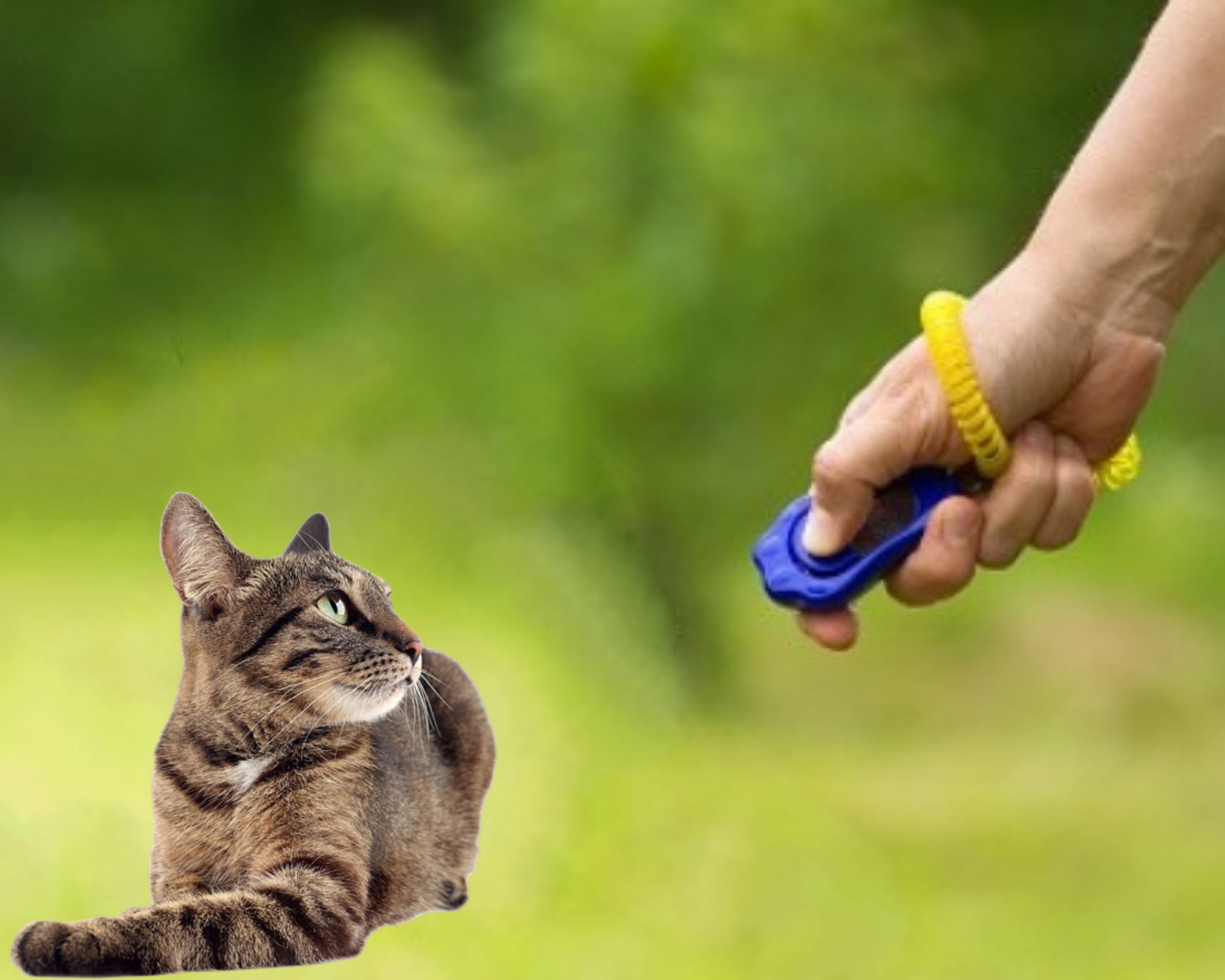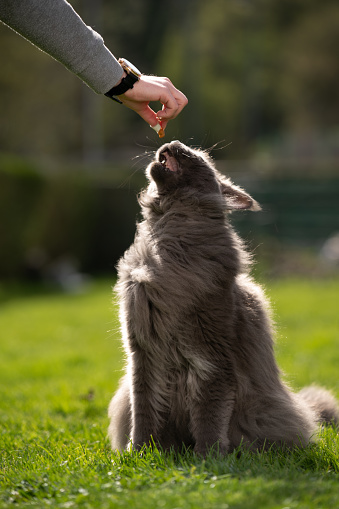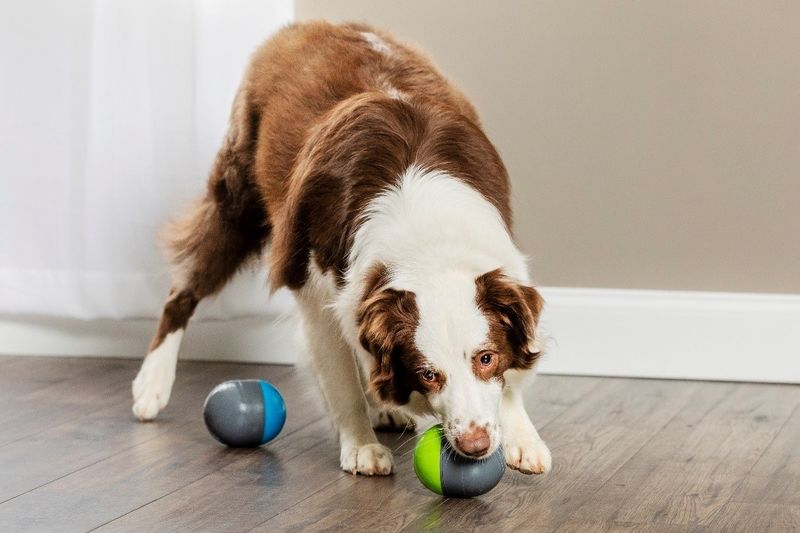
“Training a cat” still sounds ridiculous to many pet owners. Cats are considered willful and independent, that is why any attempts to train a cat may be doomed to fail. Yes, cats have not been domesticated to serve humans and according to scientists they even remain semi-domesticated. Nevertheless, some owners managed to recognize the qualities of their meowing friends and their abilities to learn tasks. Cats respond to sounds and can be motivated to perform a certain behavior when properly trained.
Talking about sounds, we will take a closer look at clickers as a training tool. In many of our articles, we have discussed clicker training, when it comes to dogs. However, today we will pay attention to clicker training a cat. Is it possible to clicker train a cat and if yes, how to do it- today we will answer these questions.
How Does Clicker Training Work?
Clickers are helpful training tools for behavior management, based on positive reinforcement. The idea behind clicker training is to capture a certain behavior and reinforce it positively, so that your paw friend can repeat it in the future. Once the cat performs the wanted behavior, you should click to “capture” this behavior and immediately give a treat. You should know your cat’s taste very well and provide him/her with a treat of a really high value to encourage him/her to do anything for it. Your cat will gradually start associating the sound produced by the clicker with treats (the given reward) and the positive feeling when receiving them.
Why to Clicker Train a Cat?
Some of you may think that clicker training a cat is impossible (or at least hard enough to be worth it) and not helpful at all. Actually, clickers are great tools to mentally stimulate your paw friend. Also, you will be able to address some behavioral issues, that may have occurred out of boredom. The more engaged your cat is in different activities, the less time and desire he/she will have to behave disruptively. There is no need to mention that exercises will be beneficial for your cat’s health and may help him/her stay fit. As you may know, cats tend to be very greedy and obesity can become a serious problem, especially if the cat is spayed/neutered. If your cat does not spend the entire day home, and you let him/her go outside for some time, whether alone or accompanied by you, you may want to prevent him/her from getting into dangerous situations. Cats are naturally curious animals and sometimes their curiosity leads them into trouble. Hence, recognizing a clicker and responding to it, can be very beneficial for your cat’s safety.
In general, we can say that through clicker training you can develop a positive attitude in your cat towards training and make him/her want to perform the given tasks. Punishment, on the other hand, will not bring the desired results. Moreover, it may affect negatively the emotional state of your pet. That is why we highly recommend positive reinforcement for behavior management.
How to Prepare For Clicker Training a Cat
Prepare a Clicker or a Relevant Replacement
Since you are going to clicker train your cat, you should have a clicker or any object, that creates a unique sound. There are various types of clickers on the market (different sounds, sizes, volume adjustment...etc.) but buying a clicker is not mandatory, i.e., you can use a ballpoint pen instead. This is a field of free improvisation where your cat’s preferences are the main factor to consider. We would recommend that you opt for an item that you do not use on a regular basis. The sound produced should be distinctive, so that it will be associated with the training only.
Prepare Treats of a High Value
Some kitties are so greedy that they can basically eat everything you give them. However, for training purposes you should prepare a treat, that is not available for your paw friend at all times and he/she is likely to appreciate it more. We would recommend that you choose treats with a strong smell to lure your cat. Do not forget to give your paw friend a very small piece of the treat, as it is supposed to work as a reward that has to be well-deserved. Also, it should not ruin your cat’s diet. If you are regularly overfeeding your cat with treats, he/she may gain weight and may not feel motivated enough to perform the wanted behavior.
Alternative to the Treats
If you notice that your cat is into certain toys (my cat really enjoys feather toys), you can incorporate these into the training sessions. It is important for you to monitor your cat’s play sessions, as some toys feature small plastic parts, that can be easily swallowed by cats obsessed with food.
Clicker Introduction
The easiest way to introduce the clicker to your cat is by just sitting down, holding the prepared treats of a “high value” and clicking: click-give a treat, click again-give a treat again. An alternative to this option is to click, then give your cat his/her favorite toy. Repeat the steps several times. You should not forget that cats are not likely to stay focused for long periods of time. Based on the cat as an individual, you may have to repeat the steps 8-10 times (maximum) and then you should stop.
Pair the Clicker With the Wanted Behavior
Most trainers usually advise owners to train their cats the “sit” command first. Of course, you can choose the behavior that you would like your cat to perform.
We would recommend that you use one of those two techniques to pair the wanted behavior with the clicker.
1. Lure your cat with the treat;
2. Capture the performed behavior.
The first approach is based on the idea that the cat will follow the treat and will adjust his/her position depending on the treat, i.e.: hold the treat above your cat’s head, so that he/she will not lose it out of his/her sight. Your kitty is likely to sit in order to keep following the treat that you hold above his/her head. Once he/she sits, you should click to mark the behavior and then give a reward. It is essential that you have good timing. Click at the moment when your cat sits and provide the reward within 1-2 seconds after that.
The second approach is based on behaviors randomly performed by your cat, that you should “capture”, if you want to reinforce them, i.e. you should wait for your cat to sit, then you should click and give a reward. Using this approach means that you should monitor your cat and wait for him/her to do something that you want him/her to do more often in the future.
It is a bit controversial which of both methods is the better one. It depends on the behavior that you want to encourage and how quickly you want to achieve the desired results. The capturing method may require more time, as you need to supervise your cat and wait for him/her to do something. Despite that, by using this method, you reinforce your cat’s natural behaviors. The luring method may bring you quicker results, however, your cat may recognize your intentions to make him/her do something.
Add a Cue Word
The last step of clicker training is adding a cue word. You should incorporate this step in the training sessions, once your cat starts understanding the whole training concept and is able to perform the wanted behavior in our example this behavior would be “sitting”.
Just a moment before your cat touches the ground, you should say “sit”, then you should click and give him/her a reward. You can either lure your cat to sit or just track his/her behavior and recognize when he/she is about to sit. If you decide to go with the luring approach, you should make sure that your cat will not recognize your intentions, so you may want to do it not so obvious. We would recommend that you keep using the clicker (click and give a treat) together with the cue word even after your paw friend has mastered the behavior. It is assumed, that this way you will create a strong bond with your cat and he/she will trust you more.

What Age Is Considered Suitable for Clicker Training to Start?
The age of 3 months is considered a suitable age for clicker training to start. However, this does not mean that you can not train adult cat tricks. If you have a very young kitten, it is recommended that you wait until it can eat solid food, so that you can use it as a reward, instead of treats.
Keep the Sessions Short
Just like dogs, cats can not keep their focus for long periods of time (actually even shorter than dogs) and you should not provide sessions longer than 5 minutes. Remember to repeat the steps every day, but keep them short.
Should You Use a Clicker for Addressing Bad Behavior?
No, you should not use a clicker to punish your cat. We would recommend that you encourage the wanted behavior instead of punishing the bad one. Your cat will definitely not react well to any kind of punishment and he/she is likely to start avoiding you and stop trusting you.
If your kitty needs more time to understand what you want him/her to do, do not lose your motivation! You should lower your expectations and should not assume that you will achieve the wanted results immediately. Just relax and improvise with the treats and toys, until you find out what motivates your kitty the most.














